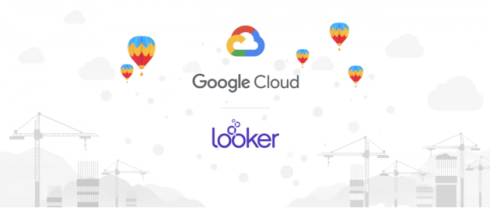
Google is acquiring Looker for $2.6 billion in cash later this year. According to the company, the acquisition will provide better data analytics in Google Cloud for the vast troves of untapped data. Looker is a platform for business intelligence, data applications and embedded analytics.
“The combination of Google Cloud and Looker will enable customers to harness data in new ways to drive their digital transformation,” said Thomas Kurian, the CEO of Google Cloud. “We remain committed to our multi-cloud strategy and will retain and expand Looker’s capabilities to analyze data across Clouds.”
Looker will enable Google Cloud customers to ingest and integrate data to gain insights, embed analytics and visualizations while using analytics, machine learning and AI, according to a post by Google’s parent company, Alphabet.
Capacitor 1.0 now available
The Ionic team has announced the latest native API container release Capacitor 1.0. Capacitor is designed for building web apps on iOS, Android, Electron and on the web as PWAs.
“Capacitor containerizes your Web App and provides consistent access to Native APIs for every platform that app runs on. That means, for example, that accessing the Camera uses the same code on iOS/Android as it does in Electron and on the web. This makes it easy to build one web app that runs natively on mobile, desktop, and the web,” Max Lynch, CEO of Ionic, wrote in a post.
According to Lynch, Capacitor is very similar to Cordova, however it takes a different approach. It expects developers to commit native app projects as source artifacts and kills the deviceready event.
Serverless platform Furnace now runs on AWS, Azure and Google Cloud
The serverless open-source data streaming platform Furnace now runs natively on AWS, Azure and Google Cloud.
Furnace helps organizations tackle Big Data challenges by spanning a serverless architecture across multiple cloud platforms leverage data from multiple sources, breaking through “cloud vendor lock-in” impedances, according to the company in a post.
With a cloud-agnostic framework, Furnace includes integrated build pipeline and infrastructure orchestration and uses GitOps methodology and clear auditable change-management.
Signal Science joins Cisco Threat Response ecosystem and releases Cloud WAF
Signal Sciences is integrating with Cisco Threat Response to help its customers defend against web app attacks. The company also recently released its Cloud WAF to its web application firewall (WAF) and runtime application self-protection (RASP) solution.
Cloud WAF offers the same detection and protection capabilities as Signal Sciences’ other methods, but with added benefits. The new solution requires no installation or maintenance and inspects and protects against malicious web requests without signatures or rules tuning and deploys in less than an hour, the company explained.
“Advanced web application attacks are on the rise. Application security solutions that provide superior detection and protection for all modern application architectures with minimal configuration, tuning, and management are highly appealing to enterprises,” said Daniel Kennedy, research director at 451 Research.
Meanwhile, the Cisco Threat Response ecosystem automates integrations across select Cisco security products and third parties to accelerate key security operations, according to a post by Signal Sciences.
Crystal 0.29.0 released
The new 0.29.0 version of the Crystal programming language includes fixes in the compiler a polished std-lib and new features.
In the compiler, a bug in the ‘require’ file path was fixed and the compiler is a pickier with respect name of variables. Since the previous version, the analysis covers initialize methods and methods with named args. In terms of language semantics, the behaviour of ‘sizeof’ and ‘instance_sizeof’ is improved for abstract structs and modules.
A detailed list of the fixes and features is available here.






